Lugege rohkem ühte Venemaa armee sagedasematest ohtudest, klõpsates https://www.eqqus.ee/sosna-ja-sosna-n/
Sentinel Photonics
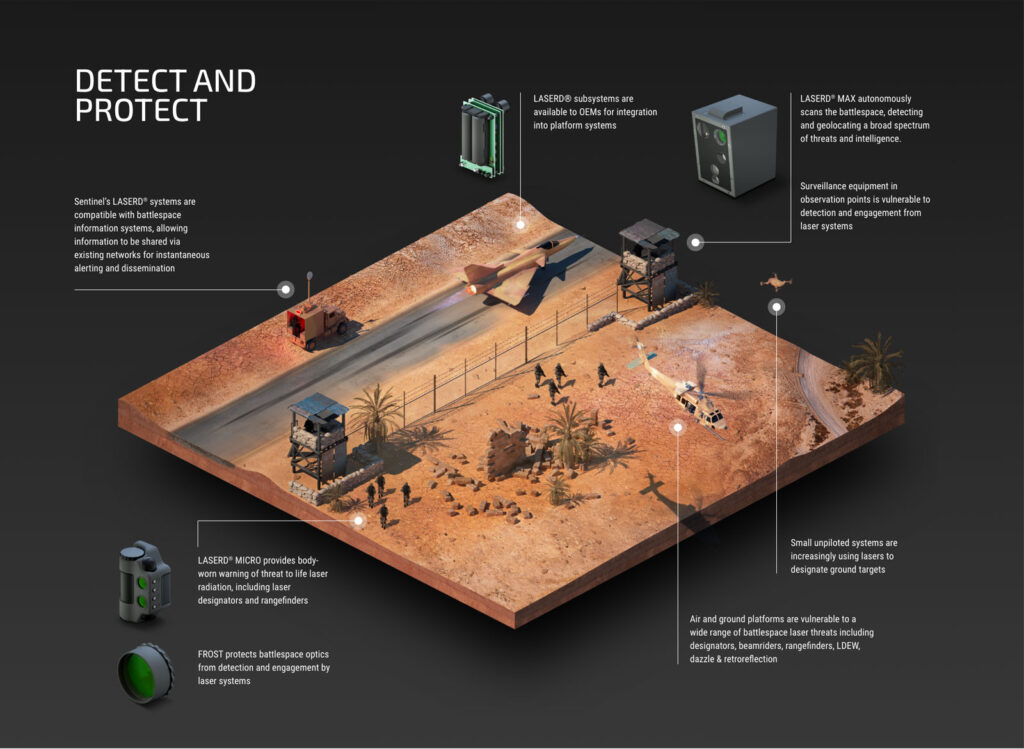
Laserite ohud & luure
Praegu ei tea sa, kui tihti sind sihitakse laseritega või miks. See on kõige ohtlikum seisund – sa ei tea, mida sa ei tea! See teema peaks avama sinu silmad tänapäeva rindejoontel valitsevatele ohtudele – alates sõjatsoonidest ja piiridest kuni avamere ja allilmani. Üle maailma investeeritakse ulatuslikult laseritesse – alates valitsusasutustest kuni allilma kartellideni ja kõikide teiste osapoolteni. Laseritel on lõputult palju kasutusvõimalusi ning ma tutvustan, millega meie tooted tegelevad:
Retropeegeldusseadmed (RRD-d) – Kasutavad optika ja elektro-optiliste seadmete sihtimiseks lasereid, tuvastades nii seadme kui ka selle kasutaja/sõiduki.
Pimestavad laserid (ajutine ja püsiv pimedaks tegemine) – Kasutatakse sinu silmade, optika ja elektro-optiliste seadmete ründamiseks ning varustuse kasutamise takistamiseks.
Laser-kaugusmõõturid (LRF-id) (tsiviil- ja sõjalised) – Kasutatakse sihtmärkide kauguse määramiseks enne tulistamist või täpse kaudtule suunamiseks kaardi ja kompassi abil.
Laser-sihtmärgi tähistajad (LTD-d) – Kasutatakse iga sihtmärgi täpseks ründamiseks, mida LTD näeb, suunates erinevat tüüpi laskemoona maalt, merelt ja õhust.
Laserluure (LASINT) – Tuvastab, millal, kus ja milliseid lasereid kasutatakse.
Sentinel Photonics – Vastumeetmed
FROST – Filtrid, mis muudavad sinu optika/elektro-optika varjatuks retropeegeldumise ja pimestavate (pimedaks tegevat) laserite vastu.
LASERD Micro (Universaalne) – 200g kaaluv universaalne kaasaskantav laserhoiatussüsteem (tuvastab tsiviil- ja sõjalised laser-kaugusmõõturid (LRF-id) ning laser-sihtmärgi tähistajad (LTD-d)).
LASERD Nomad (Sõidukile) – sõidukitele mõeldud laserhoiatussüsteem (tuvastab tsiviil- ja sõjalised LRF-id ning LTD-d).
LASERD Max (Universaalne) – Laserluure (LASINT) seade, mis suudab tuvastada ja dekodeerida ükskõik millise laseri, mis seda tabab, sõltumata kaugusest. Automaatne iga laseriallika geolokatsioon ja sihtimine koos kontekstipildiga, et kasutaja saaks teha lõpliku otsuse.
Lihtsalt sellepärast, et sa ei näe seda, ei tähenda, et seda pole olemas.
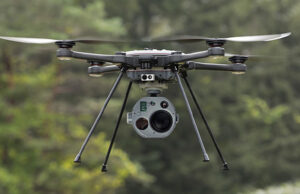
Designators
Laser-sihtmärgi tähistajad kasutatakse sihtmärgi “värvimiseks” nähtamatu laserkiirega, võimaldades laserjuhitavatel pommidel, rakettidel või suurtükimürskudel lukustuda sihtmärgile ja tabada seda ülitäpselt.
Neid kasutavad sageli maaväed, õhusõidukid või droonid, et tähistada rünnakuks vaenlase sõidukeid, punkreid või taristut.Oht: Kui vaenlane avastab laser-tähistuse, tähendab see, et rünnak on vahetult ees. Vastumeetmeteks koolitatud sõdurid võivad proovida positsiooni muuta või laserkiire katkestada.
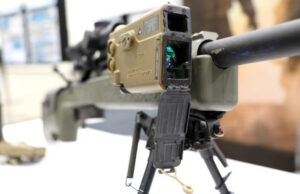
Rangefinders
Laser-kaugusmõõturid mõõdavad sihtmärgini ulatuvat kaugust, saates selle poole laserkiire ja arvutades selle tagasipõrke aja alusel.
Kasutusel sõjalistes rakendustes sihtimiseks, snaiprite arvutuste tegemiseks ja suurtükitule korrigeerimiseks.Oht: Kaugusmõõturid ise ei kujuta endast otsest ohtu, kuid neid kasutatakse sageli koos relvadega. Seega võib kaugusmõõturi tuvastamine viidata sellele, et vaenlane valmistub rünnakuks.
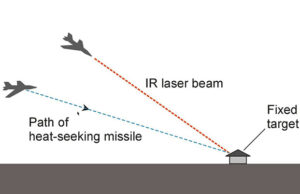
Beamriders
Beamrider on juhitavussüsteem, kus rakett järgib laserkiirt otse sihtmärgini.
Erinevalt laserjuhitavatest relvadest, mis suunduvad tagasipeegelduvale signaalile sihtmärgil, püsivad beamrider-tüüpi raketid käivitaja poolt kiiratava laserkiire sees.Oht:
Beamrider-raketid on sageli kiired ja täpsed, mistõttu on neid pärast väljalaskmist väga raske tõrjuda.
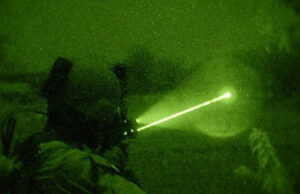
Illuminators
Laser-valgustid kasutatakse nähtavuse parandamiseks andurite, öövaatlusseadmete ja sihtimissüsteemide jaoks.
Infrapuna (IR) versioone kasutavad sageli eriüksused varjatuks sihtmärkide tähistamiseks.Oht:
Kuigi laser-valgustid ei kahjusta sihtmärke otseselt, saab neid kasutada vaenlase asukohtade tuvastamiseks, jälgimiseks ja esiletõstmiseks järgnevateks rünnakuteks.
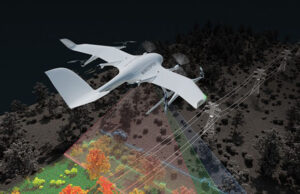
LIDAR (Light Detection and Ranging)
LIDAR kasutab laserimpulsse, et luua maastiku, hoonete või vaenlase positsioonide kolmemõõtmelisi kaarte. Kasutusel luurel, autonoomsetes sõidukites ja lahinguvälja seireks.
Oht:
Kuigi LIDAR ei ole otsene ründerelv, aitab see parandada sihtimist ja luureinfo kogumist, muutes vaenlase operatsioonid tõhusamaks.
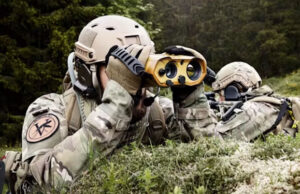
Retro Detectors
Retrodetektorid skaneerivad laserpeegelduse tuvastamiseks, et määrata, kas vaenlane kasutab optilisi seadmeid nagu sihikud, binoklid või kaamerad.
Need aitavad tuvastada snaipreid, peidetud jälgijaid või seireseadmeid.Oht:
Kui vaenlane kasutab retrodetektorit, tähendab see, et nad otsivad aktiivselt ja tuvastavad ohte, mis võib kompromiteerida varjatust ja suurendada sihtmärgiks saamise riski.
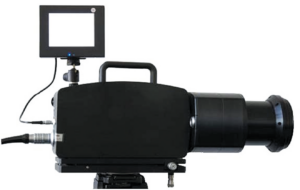
Laser-Based Communications & Microphones
Lasereid saab kasutada pika vahemaa tagant, kõrge turvalisusega kommunikatsiooniks, edastades andmeid modifitseeritud laserkiirte kaudu.
Lasermikrofonid suudavad tuvastada pindade, nagu aknad, vibratsioone ja muuta need heliks, võimaldades salajast pealtkuulamist.
Oht:
Kuigi see ei ole füüsiline rünnak, võib lasertehnoloogia abil toimuv kommunikatsiooni pealtkuulamine või jälgimine põhjustada suuri turvariske, kogudes luureinfot märkamatult.

LDEW (Laser-Directed Energy Weapons)
Kõrge võimsusega laserrelvad, mis on loodud sihtmärkide hävitamiseks või desaktiveerimiseks kontsentreeritud energia abil.
Kasutatakse droonide, rakettide allatulistamiseks või isegi sõidukite ja elektrooniliste süsteemide hävitamiseks.
Oht:
LDEW-id (Laser Directed Energy Weapons) suudavad koheselt hävitada või desaktiveerida kriitilisi sihtmärke, ning nende vaikne, valguse kiirusel toimiv rünnak muudab need pärast aktiveerimist väga raskesti tõrjutavaks.
Sentinel Photonics on Ühendkuningriigis tegutsev ettevõte, mis on spetsialiseerunud edasijõudnud laserite tuvastamise ja kaitse süsteemidele, mis on mõeldud kasutajate ja seadmete kaitsmiseks laserite ohtude eest. Ettevõte asutati 2019. aastal Ühendkuningriigi kaitseministeeriumi (MOD) spin-outina ja kasutab rohkem kui kahekümneaastast kogemust laserite süsteemide, optika ja ohtude maandamise valdkonnas.
Ettevõtte tooteportfell sisaldab järgmist:
LASERD®: Laser-signaalide ja sündmuste salvestamise seadmete perede, mis suudavad tuvastada ja dekodeerida laserite ohtusid reaalajas. Märkimisväärsed mudelid on:
LASERD® MAX: Pakub ulatuslikke laserite tuvastamise ja luurekogumise võimekusi laia valiku reaalse maailma ohtude vastu.
LASERD® MICRO: Kompaktne laserite ohtude tuvastaja, mis on loodud hoiatama sõjalisi kasutajaid laser-tähistajate ja kaugusmõõturite poolt tekitatud laserimpulsside kiirguse eest.
LASERD® OEM: Ehitatud moodulaarsete, vahetatavate sensorüksustega, et tagada kohandatav integreerimine.
FROST: Kaitsvate filtrite seeria, mida saab kinnitada optika eesmärgiklaasidele, et vältida tuvastamist laser-valgustuse kaudu ja kaitsta retropeegelduse ohtude eest.
Sentinel Photonics teenindab erinevaid turge, sealhulgas kaitse- ja julgeolekusektorit, pakkudes lahendusi maavägedele (jalaväelastele ja sõidukites), õhu- ja merevägedele. Nende tooted on loodud operatiivsete tulemuste ja ohutuse parandamiseks, pakkudes reaalajas luureteavet ja kaitset laserpõhiste ohtude vastu.
2025 aasta veebruaris laiendas ettevõte oma kohalolekut Euroopas, sõlmides partnerluse StarC4SYS-iga Rumeenias ja TBM Netherlands-iga Beneluxi piirkonnas. Need strateegilised partnerlused on suunatud kohaliku ekspertiisi täiustamisele, Sentinel’i tuvastamissüsteemide ligipääsu sujuvamaks muutmisele ning kindla tehnilise toe tagamisele sõjalistele ja julgeolekuorganisatsioonidele nendes piirkondades.
Sentinel Photonics tegutseb Cody Technology Parkis Farnboroughs ja Porton Science Parkis Wiltshire’is, järgides ISO9001-sertifitseeritud tootmisprotsesse, et tagada kvaliteetsed lahendused kaitse- ja julgeolekualastes rakendustes.
Mida teeb FROST ?
FROST on spetsialiseeritud kaitsefilter, mis on mõeldud kinnitamiseks optiliste seadmete läätsedele, nagu sihikud, binoklid ja muud sihtimissüsteemid. Selle peamine eesmärk on takistada laserpõhist tuvastamist ja kaitsta kasutajaid võimalike ohtude eest, mis on seotud laser-valgustusega.
Paljudes sõjalistes ja julgeolekualastes olukordades kasutavad vaenlased lasereid optiliste seadmete tuvastamiseks ja jälgimiseks. Kui laserkiir tabab kaitsmata läätselt, võib osa valgust peegelduse tagasi saata, sarnaselt sellele, kuidas loomade silmad öösel valguse käes helendavad. See peegelduse efekt võib paljastada kasutaja asukoha, muutes ta haavatavaks tuvastamiseks ja sihtimiseks.
FROST töötab, neelates või suunates eemal saabuvad laserkiired, takistades nende tagasipõrkumist ja operaatori paljastamist. See kaitse on äärmiselt oluline sõdurite, snaiprite ja julgeolekuvägedega, kes tuginevad optilistele seadmetele lahinguväljal. Vähenenud laserpõhise tuvastamise riskiga aitab FROST säilitada varjatust, parandada operatiivset turvalisust ja suurendada üldist ohutust kõrge riskiga keskkondades. See kaitseb kõigi lainete pikkuste eest!
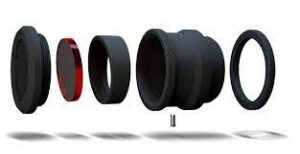
Täiustatud signatuuri juhtimine: Need vähendavad optika üldist signatuuri, muutes selle vähem nähtavaks tuvastamissüsteemidele, mis on praegu kasutusel EDF (Euroopa Kaitseväe) vägede tuvastamiseks ja sihtimiseks.
Vastuseire: Need takistavad optika ja selle kasutajate tuvastamist laserpeegelduse kaudu, muutes vaenlase jaoks kasutaja sihtimise raskemaks. See kehtib kõikide kaitsmata optikaseadmete kohta.
Laserikaitse: Kui optika tuvastatakse, kaitsevad need optikat ja kasutaja nägemist, takistades kahjustusi, mis on põhjustatud kõrgvõimsusega laserkiirtest, nagu need, mida kiirgavad laser-kaugusmõõturid ja sihtmärgi tähistajad.
Mis asi on LASERD?
LASERD on täiustatud laserite tuvastamise ja salvestamise süsteemide perede, mis on loodud aitama sõjaväe ja julgeolekualaste töötajate tuvastada ja reageerida laser-põhistele ohtudele reaalajas. Need seadmed tuvastavad, analüüsivad ja salvestavad laser-signaale, pakkudes kriitilist teavet potentsiaalsete ohtude kohta, nagu laser-tähistajad, kaugusmõõturid ja sihtimissüsteemid, mida kasutavad vaenlased.
Laser-ohtud on kasvav mure kaasaegses lahingus ja julgeolekutegevustes. Paljud sõjaväed ja vaenulikud rühmad kasutavad laser-põhiseid seadmeid sihtmärkide tähistamiseks, kauguste mõõtmiseks või isegi optiliste andurite hävitamiseks. Ilma korraliku tuvastamiseta võivad need laserid olla kasutatud personali ja varade asukoha määramiseks, jälgimiseks ja ründamiseks enne, kui nad isegi taipavad, et nad on sihtmärgiks valitud.
LASERD süsteemid töötavad, skaneerides pidevalt keskkonda laserite aktiivsuse otsimiseks. Kui laser tuvastatakse, ei hoiatab seade mitte ainult kasutajat, vaid salvestab ka võtmetähtsusega üksikasjad, nagu lainepikkus, impulssmuster ja allika suund. See teave aitab operaatoritel määrata, kas laser on kahjutu kaugusmõõtur või tõsisem oht, nagu relvade juhtimissüsteem.
Pakkudes reaalajas teadlikkust laser-põhistest ohtudest, täiustab LASERD situatsiooniteadlikkust, parandab otsustusvõimet ja aitab kaitsta isikuid potentsiaalselt ohtlike laser-põhiste sihtimissüsteemide eest.
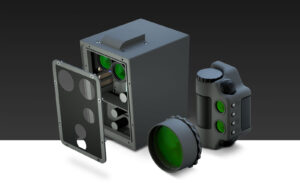
Autonoomne ohu skaneerimine: Seade suudab automaatselt skaneerida määratud piirkonda laser-põhiste ohtude leidmiseks, võimaldades kasutajal mõista, milliste ohtudega nad hetkel silmitsi seisavad.
Üksikasjalik laserite tuvastamine: Seade suudab tuvastada laia valiku laser-põhiseid ohtusid, sealhulgas kaugusmõõturitest ja tähistajatest pärit lasereid. See tagab, et laser-ohtusid tuvastatakse ja vähendab teie sõjaväelaste juhusliku sihtimise võimalust.
Laser-mikrofoni tuvastamine: Seade suudab tuvastada laser-mikrofone, mida kasutatakse vestluste pealtkuulamiseks. Seda tehnikat kasutavad järjest rohkem võõrad vaenlased väärtusliku luureinfo kogumiseks.
